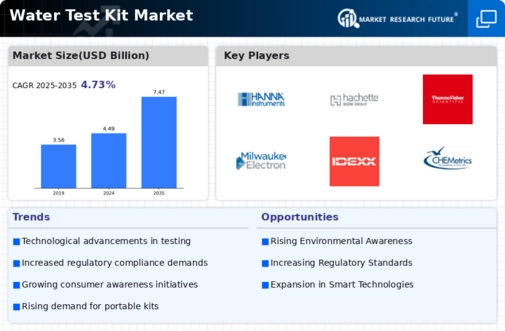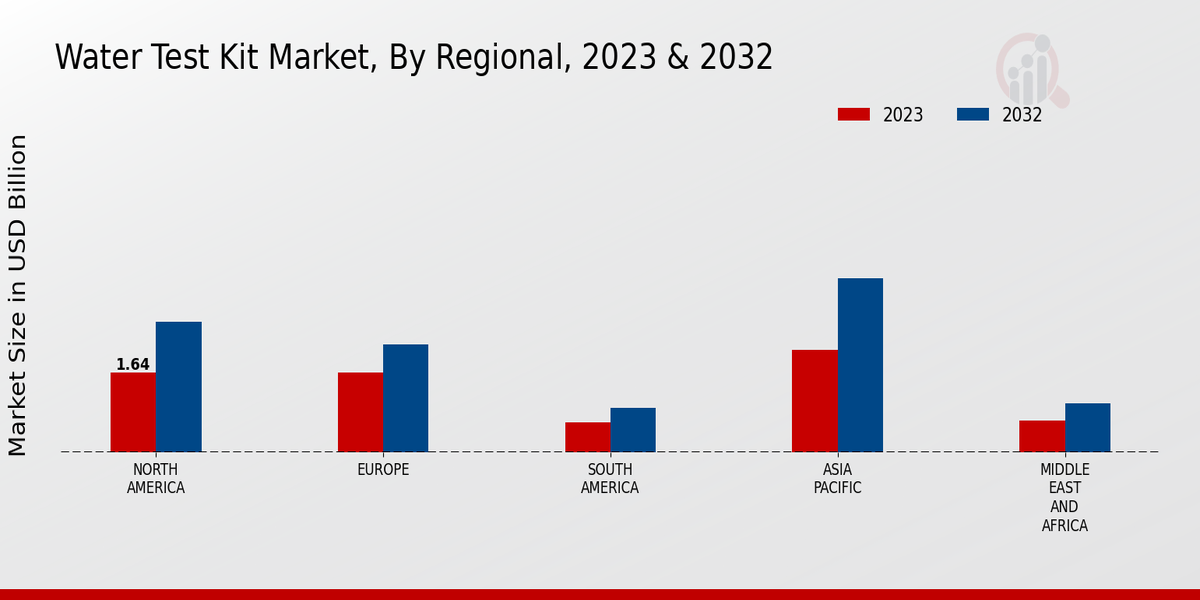Market Growth Projections
Rising Industrial Applications
The Global Water Test Kit Market Industry is witnessing increased demand from various industrial sectors. Industries such as pharmaceuticals, food and beverage, and manufacturing require stringent water quality testing to comply with regulatory standards. For instance, the pharmaceutical industry mandates rigorous testing of water used in production processes to ensure product safety. As industries expand globally, the need for reliable water testing solutions becomes paramount. This trend is likely to bolster the market's growth, with projections indicating a rise to 7.47 USD Billion by 2035, as industries prioritize compliance and quality assurance.
Increasing Water Quality Concerns
The Global Water Test Kit Market Industry is experiencing growth driven by rising concerns about water quality. Contaminated water sources pose health risks, prompting consumers and industries to seek reliable testing solutions. Governments worldwide are implementing stricter regulations on water quality, which further fuels demand for test kits. For instance, the United States Environmental Protection Agency has set guidelines for drinking water contaminants, leading to increased adoption of water testing solutions. This trend is expected to contribute to the market's projected value of 4.49 USD Billion in 2024, as stakeholders prioritize safe water access.
Expansion of Home Testing Solutions
The Global Water Test Kit Market Industry is experiencing a shift towards home testing solutions. With the rise of DIY culture and increased consumer interest in personal health, individuals are more inclined to test their water quality at home. This trend is supported by the availability of user-friendly test kits that provide accurate results without requiring specialized knowledge. Retailers are expanding their offerings to include a variety of home testing kits, catering to this growing demand. Consequently, the market is likely to see substantial growth as more households prioritize water quality testing for health and safety.
Technological Advancements in Testing Methods
Technological innovations are significantly impacting the Global Water Test Kit Market Industry. The introduction of advanced testing methods, such as portable and rapid testing kits, enhances user convenience and accuracy. These innovations allow for real-time monitoring of water quality, which is particularly beneficial for industries like agriculture and food processing. For example, the development of smartphone-compatible test kits enables users to analyze water quality on-site. This trend is likely to drive market growth, as consumers increasingly prefer efficient and user-friendly testing solutions, contributing to the anticipated CAGR of 4.73% from 2025 to 2035.
Growing Awareness of Environmental Sustainability
Awareness of environmental sustainability is influencing the Global Water Test Kit Market Industry. Consumers and organizations are increasingly recognizing the importance of protecting water resources and ensuring safe drinking water. This awareness drives demand for water testing kits that can identify contaminants and promote responsible water usage. Educational campaigns and initiatives by governmental bodies further support this trend, encouraging individuals to test their water sources regularly. As a result, the market is expected to expand as more consumers seek to contribute to environmental sustainability through informed water quality management.








